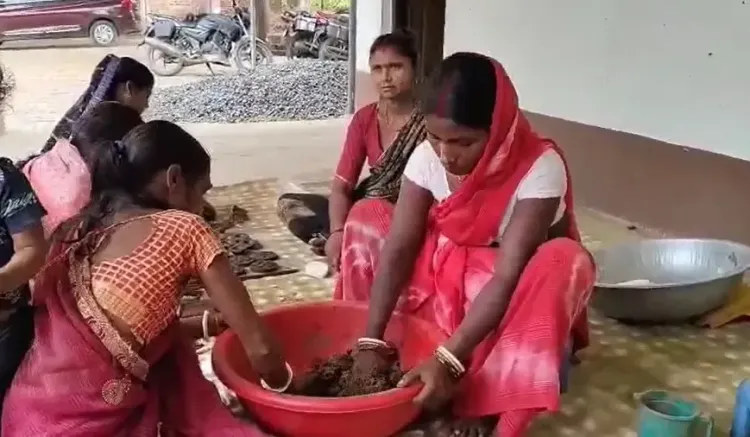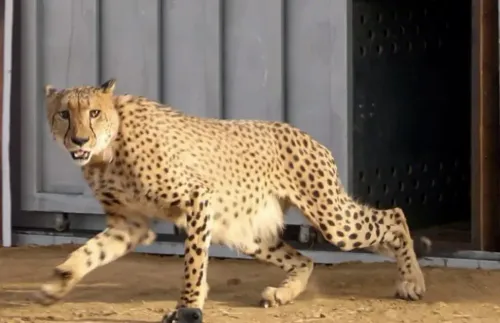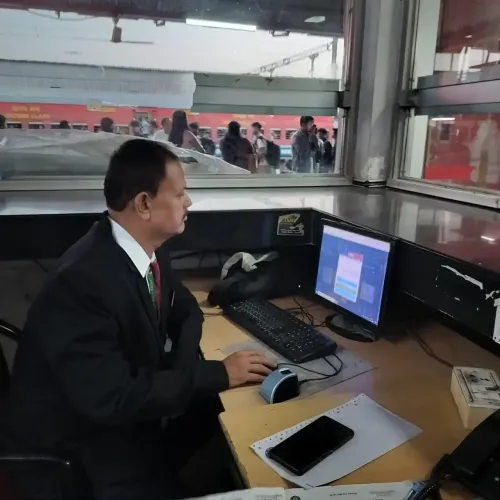How are rural women in Jharkhand achieving self-reliance with cow dung crafts this Diwali?

Synopsis
Key Takeaways
- Empowerment: Rural women are gaining financial independence.
- Environmental conservation: Products are eco-friendly and enrich soil.
- Cultural significance: Crafts reflect traditional values and practices.
- Sustainability: Using local resources promotes sustainable living.
- Community development: Initiatives contribute to local economic growth.
Koderma (Jharkhand), Oct 18 (NationPress) While traditional earthen and electronic lamps are widely used, many are unaware that exquisite lamps can also be crafted from cow dung. At the Pehalwan Ashram in Bhakra, nestled in the secluded Satgawan block of Koderma district in Jharkhand, 15 unique products, including lamps and idols of Ganesha and Lakshmi, are being created from cow dung in preparation for Diwali and Chhath Puja. Through these cow dung crafts, rural women are forging a path to self-reliance.
This Diwali, the lights that brighten homes will also illuminate the lives of women in the villages. At Pehalwan Ashram, the merging of tradition, eco-consciousness, and self-sufficiency is clear. The lamps and idols crafted from cow dung are not only environmentally friendly but also serve as powerful emblems of women’s empowerment. By producing and selling these items, rural women are not only securing an income; they are also enhancing their quality of life and achieving economic independence.
Vijay Kumar, Treasurer of the National Jharkhand Seva Sansthan, along with Neetu Kumari and Ishan Chand Mahato, who were trained in Bhuj, Gujarat, have imparted their skills to local women to create these crafts. Besides lamps and idols, they are also making decorative door garlands, “Shubh Labh” and Swastik symbols, incense sticks, cups, and nameplates adorned with festive messages like “Shubh Deepawali” and “Jai Chhathi Maiya”. Crafted from cow dung and sawdust, these products are sun-dried and painted in vibrant colors, making them visually appealing.
Manoj Dangi, Secretary of the National Jharkhand Seva Sansthan, noted that preparations for Diwali commenced with Dhanteras. He mentioned that the cow dung products were recently showcased at the Diwali fair organized by the IAS Officers’ Wives Association in Ranchi, where numerous senior state officials admired and purchased them. These eco-friendly products are believed to absorb radiation and radiate positive energy.
After use, they naturally decompose, enriching the soil as manure, thus causing no environmental harm. Additionally, by utilizing dung from old, non-milking cattle, these animals are receiving protection.
Once regarded as a Naxal-affected region, the Satgawan block of Koderma is now evolving into a center of empowerment and sustainability. Through cow dung crafts, Pehalwan Ashram is promoting three essential aims: women’s empowerment, cow protection, and environmental conservation—contributing significantly to building a developed and self-reliant India.









